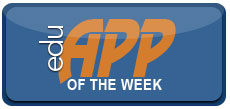I’ve had some nagging concerns about PowerPoint for some time now. I should be upfront and admit to not using it; when I taught or currently in my presentations. Perhaps that clouds my objectivity. But my worries resurfaced after reading an article in the current issue of Teaching Sociology. I’ll use this post to raise some questions and concerns about the role of PowerPoint both in the classroom and in student learning experiences.
Read more ›CURRENT ARTICLE • August 01
OTHER RECENT ARTICLES
 With each semester’s end comes the often-dreaded course evaluation process. Will the students be gentle and offer constructive criticism, or will their comments be harsh and punitive? What do students really want out of a course, anyway? A better time to think about course evaluations is at the beginning of the semester. At that point, an instructor can be proactive in three areas that I have found lead to better course evaluations.
With each semester’s end comes the often-dreaded course evaluation process. Will the students be gentle and offer constructive criticism, or will their comments be harsh and punitive? What do students really want out of a course, anyway? A better time to think about course evaluations is at the beginning of the semester. At that point, an instructor can be proactive in three areas that I have found lead to better course evaluations.
Motivating students is one of the most difficult challenges for any faculty member, but lighting the fire is critical to ensuring active, dynamic classes. Alice Cassidy, PhD, principal of In View Educational and Professional Development and a faculty member at the University of British Columbia, has devised a four-step process to motivate students for a more stimulating class for students and faculty alike.
Read More ›Student engagement is another of those buzz phrases popular in higher education. As with many regularly used terms, everyone assumes we are talking about the same thing; but when asked for definitions, either we are hard pressed to come up one or what’s offered is a decidedly different collection of definitions. Here’s an article that includes clear definitions and, based on a creative synthesis of research, offers 10 ways to promote student engagement.
Read More ›I read lots of articles on teaching and learning. Most are solid pieces of pedagogical scholarship; a few are exceptional and I found one of those here lately. I prepared a long and detailed summary of it for the August/September issue of The Teaching Professor newsletter. For this post I’d like to identify several features that make this such an outstanding exemplar of pedagogical scholarship.
Read More ›They’re a hassle. Depending on whether it means constructing a different exam, arranging a time and location to administer the exam, or grading after the fact, a makeup exam can consume a lot of extra time and effort. Unfortunately, such exams are pretty much a necessity. Most of our institutions require faculty to excuse students for certain events and activities such as serious illnesses, court appearances, military duty, and university-sponsored athletics.
Read More ›Cultivating Stronger Relationships with Online Faculty through an On-Campus Visitation Program
Strategic relationships build strong commitment and a measurably higher expectation of compliance in all areas, including institutions of higher learning. Columbia Southern University (CSU), a fully online institution, developed an on-campus visitation program in the spring of 2011, inviting groups of faculty to attend a one-day or two-day event for the purpose of connecting faculty to their campus support structure.
Read More ›
|
I enjoy working with students and believe that learning can be a fun activity. Today there are some interesting ways to introduce elements of fun into classroom activities using stand-along buzzer systems—wired and WiFi—but these can be very expensive and a bit bulky.
Several years ago I was looking for something that was interactive and easy to use and, after not finding anything affordable, I decided to build a unit from scratch. After about 11 years, I still use that unit today to play a Jeopardy like game using PowerPoint. I have tried incorporating it into TurningPoint (TP) clicker systems, since I use clickers in my classroom, but could not get the slide presentation to work well with the hardware, so I simply went back to my creation.
Recently, I came across an iPad app called PickMeBuzzer, which, on the surface, appeared to be just the thing that would do the trick. Unfortunately, it didn’t work as well as I had hoped. Setup was a bit of a challenge and requiring students to purchase the app was really not an option that I wished to explore.
The app works nicely if you can keep track of buzzers by sound—individuals can buzz in and each buzzer has a unique sound. While this operation does not require WiFi, it poses a problem when two or more individuals/groups buzz in at the same time. How do you distinguish who buzzed in first? Those of you who know me well, know that I enjoy experimenting and can pick up on things rather quickly but this app is not very intuitive and the instructions leave much to be desired.
The physical version of buzzers sold by the maker of PickMeBuzzer (approximately $150.00) might be a better investment for a department because then it would be free to students and it seems to have a nice computer interface with PC and Mac. In addition, I imagine that it could be somewhat portable. But it would really be nice to have an iPad version that works well. After purchasing three versions of PickMeBuzzer for testing purposes, I am still not convinced that this is the way to go yet, at least as of my last attempt to get it working the way I want.
In the end, this app has potential but it could do with some fine tuning and it should be free. As a teacher and a workshop presenter, I do not want to ask people to purchase an app that they may not use outside my classroom or workshop. As an option, the folks at Buzzer.com might consider a paid version for instructors and offer a free version of buzzer apps to students or workshop attendees. However, it must work flawlessly. That would make PickMeBuzzer more attractive to a wider audience. In fact, I just might write them to offer that suggestion.
I am always looking for ways to introduce fun in the teaching and learning arena but I would like to do this without having to think about whether the technology will work and work well.
Summary:
PickMeBuzzer has a lot of potential but it needs some work to make it truly intuitive and it should work all the time every time. There are few other apps in this category and therefore, I think the app maker is on to something. I play games like Checkers, TicTacToe, and Dominoes with family and friends and those work rather well by allowing us to play via WiFi so why not PickMeBuzzer? Great idea for an app but not yet ready for prime time.
Dave Yearwood is an associate professor and chair of the technology department at the University of North Dakota.
Read More ›Requirements from accreditors and the Higher Education Opportunities Act (HEOA) have made assessment more important than ever. The key to doing it well is adopting sustainable assessment practices, says Linda Suskie, author of Assessing Student Learning: A Common Sense Guide.
Read More ›






